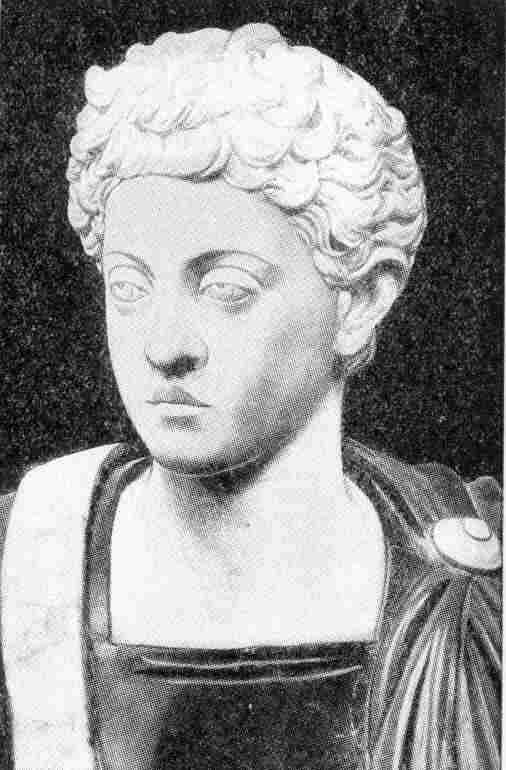
Figure 1.--This sculpture is Commodus as a youth. We have no details on the sculptor, but given Commodus' reputation, it must have been a contemporary work. |

|
Rome during the 2nd century AD gets a series of competent rulers under whom the Empire prospered. These rulers are often referred to as the "five good emperors" (96-180 AD). The era is a return to the firm, competent rule that Augudstus embodied. These five emperors and the years of their rule are Nerva (96-98 AD), Trajan (98-117 AD), Hadrian (117-138 AD), Antoninus Pius (138-161 AD) and Marcus Aurelius (161-180 AD). The Empire during this period stops expanding and consolidatesc its borderes. The economy prospers under peace and competent rule. The death of Marcus Aurelius begins what many historians believe is the beginning of the decline of the Empire. Beginning with Nerva, the eperors began choosing competent successors rather than their sons. Marcus Aurelius decided to revert to previous practice and designates his son Commodus who rules as an especially brutal tyrant. Commodus is killed in a conspiracy (192 AD). For the first time since the days of Ceasar, civil war broke out again.
Septimus Severus emerges as the victor (193 AD) and rules as a military dictaor until his death (211 AD). This sets the pattern for the rest of the Empire's history. The days of Senatorial authority have long past. Rome is now ruled by the strongest military commander. In addition Barbarian uprisings become increasingly troublesome on the eastern border with Germany.
Rome during the 2nd century AD gets a series of competent rulers under whom the Empire prospered. These rulers are often referred to as the "five good emperors" (96-180 AD). The era is a return to the firm, competent rule that Augudstus embodied. These five emperors and the years of their rule are Nerva (96-98 AD), Trajan (98-117 AD), Hadrian (117-138 AD), Antoninus Pius (138-161 AD) and Marcus Aurelius (161-180 AD). Trajan was an especially effective administrator. He expanded the borders with successful campaigns against the Davians and Parthians. This is, however, the last important expasion of territory achieved by the Empire. The Empire stops expanding and consolidates its borderes. Hadrian gives up some territory in the East and builds the wall across northern Britain. Antoninus Pius also ruled over a time of great prosperity and peace. The Roman economy prospers under peace and competent rule. The death of Marcus Aurelius begins what many historians believe is the beginning of the decline of the Empire. Beginning with Nerva, the emperors began choosing competent successors rather than their sons.
Marcus Aurelius decided to revert to previous practice and designates his son Commodus as his successor. The bust here shows Commodus as a boy of about 12-13 years of age Figure 1). who rules as an especially brutal tyrant. He was profligate and licentious as well as deeply suspious of those arround him. Historians describe him as one of the most muderous tyrants in history. Commodus is killed in a conspiracy (192 AD). Film buffs will of course recognize Commodus as the villan in the popular film "The Gladiator".
For the first time since the days of Ceasar, civil war broke out again.
Septimus Severus emerges as the victor (193 AD)
Septimus Severus ruled as a military dictaor until his death (211 AD).
His elder son was Marcus Aurelius Antoninus. His mother was Empress Julia Domna. He was better known as Caracala. ewas proclaimed as co-ruler by his father (198). His brother, Geta, also became co-emperor (209,). Their farther died (211). Cracals ordered the the Praetorian Guard to murder his brothe after which Caracalla reigned as sole ruler. He found administration to be mundane, and assigned these duties to his mother who apparently tolerated the murdr of her younger son. Caracalla is today seen as one of the most brutal and tyranical of Roman emperors. He had to deal with domestic instability and invasions by Germanic tribes--neirher very effectivly.
This sets the pattern for the rest of the Empire's history. The days of Senatorial authority have long past. Rome is now ruled by the strongest military commander. Since the days of Marius, the Senate or civilian control of the army had long past. Even so, the Senate even after Augustus becomes emperor remains an important institution and some emperors tried to reserect its role in government. After Marcus Aurelius, however, the Senate becomes an institution of little real importance. Roman history becomes a contest between competing military commanders.
Barbarian uprisings during the reign of Marcus Aurelius become increasingly troublesome on the eastern border with Germany.
Despite the economic prosperity of the 2nd century, Roman literature never rivals the Golden era of the Ciceronian and Augustan writers.
We have developed some information on Roman children's clothing, we do not at this time have any details as to stylistic changes over time. as far as we can tell, Children's clothing was remarably unchanged during 1,000 year lomg Roman era.
Navigate the Historic Boys' Clothing Web Site:
[About Us]
[Introduction]
[Biographies]
[Chronology]
[Clothing]
[Disease and Health]
[Economics]
[Environmental issues]
[Feminism]
[Geography]
[History]
[Human Nature]
[Law]
[Nationalism]
[Presidents]
[Religion]
[Royalty]
[Science]
[Social Class]
[Bibliographies]
[Contributions]
[FAQs]
[Glossaries]
[Images]
[Index]
[Links]
[Registration]
[Search]
[Tools]
[Children in History Home]
Navigate the Historic Boys' Clothing Web chronological pages:
[Return to the Main chronology page]
[Return to the Main Roman chronology page]
[Return to the Main medieval era]
[The 6th century BC]
[The 5th century BC]
[The 4th century BC]
[The 3rd century BC]
[The 2nd century BC]
[The 1st century BC]
[The 1st century AD]
[]
[The 3rd century AD]
[The 4th century AD]
[The 5th century AD]
[The 6th century AD]